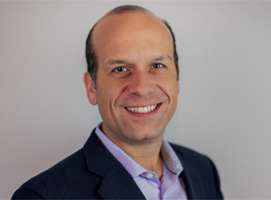enrollment
Leveraging SEO in Your Enrollment Growth Strategy
Search engine optimization (SEO) is a key piece of any institution’s lead generation strategy. Driving organic traffic to your website, and program pages, is critical to your ability to meet—and exceed—your enrollment goals. A few months ago I discussed SEO Action Planning, which provides the bedrock for effectively using SEO, but this month I want to talk about how (and why) to make it the core of your enrollment growth strategy.

More than 75 percent of graduate and online students use search engines to start their program search, and even more use these same search engines (even if they know the URLs of their schools of interest) to do the research that results in their selection of a program. This is often where I begin when talking with institutions about the critical need for a sound SEO strategy. Not having one places a school at a severe disadvantage in comparison with its competitors.
Through my work with institutions, it is apparent that universities woefully underfund SEO. Consider that about 50 percent of institutional website traffic comes from search engines, but institutions on average only commit about 13-16 percent of their marketing budgets to a concerted SEO strategy.
So, let’s move from SEO action planning to using SEO as part of your lead and enrollment growth strategy:
SEO vs. digital lead generation
SEO and digital lead generation (DLG) cumulatively account for between 60-70 percent of all leads in the graduate and online space, making them a key component of a strong, optimized, and integrated marketing strategy. However, DLG is getting more expensive as competition increases. Schools are spending hundreds of thousands of dollars per program for ad spend. Although critical to success, over-reliance on DLG is a symptom of a lack of investment in SEO. Schools who commit the necessary resources to SEO are less dependent on DLG.
Investing in SEO as a process (rather than a one-time event) that is continually tended to, updated, and optimized provides schools with a greater volume of organic traffic entering their site and program pages. RNL research shows that organic traffic converts at 7x any other lead generation source. Therefore, if you are committing to SEO on a continuous basis, the reliance on DLG—and the costs of ad spend—lessens.
Prioritize programs
Not all programs are alike. Some programs have much higher enrollment and revenue growth potential than others. Schools that evaluate these factors and prioritize their marketing investment accordingly are ahead of those that do not. SEO is both the “great equalizer” (for schools/programs with less brand awareness) and acts as a “rising tide that raises all boats.” For programs with lower demand, DLG may be a costly mistake, while SEO will cost less and maximize success. Optimized websites will also lead more visitors to both high- and low-demand program pages. As visitors become leads, their likelihood to convert to students is significantly higher than what DLG could ever provide. For high-demand programs, combining SEO and DLG proves to drive the greatest number of leads, but for programs with lower demand, you can lean on SEO to drive organic lead generation.
Impact vs. expense
DLG is an expensive and (depending on the program) necessary investment. Ad spend costs continue to rise, and for high-demand programs those costs can add up to tens of thousands of dollars per month! Schools need to invest in DLG, but SEO also deserves investment, and this investment is likely to have longer-term benefits than DLG alone. Establishing a continuous SEO strategy and process is less expensive than DLG, but its impact is substantial as it draws in organic traffic that converts much higher than any other lead source. However, the greatest impact of an investment in SEO is made when institutions realize that SEO requires ongoing tending, tweaking, and evaluation to ensure your pages are always optimized. It is a process and not an event. Over time, when SEO is managed correctly, it can produce 50 percent (or more) of your leads, lessening (not eliminating) your reliance on DLG.
SEO is a long-term commitment
Again, SEO is a process and not a one-time event. As much as we would like whatever we invest in to provide immediate results and yield, SEO takes time. Your patience will be well rewarded in time, as long as the investment is continuously tended to. When initially undertaken, SEO takes about two months to optimize the targeted site pages. It then takes about six weeks before Google recognizes the changes and begins to reward your efforts by moving your content closer to page 1, onto page 1, and/or further up page 1 in student searches. The process then continues—analysis of performance, adjusting and improving optimization based on market shifts/changes, Google algorithm changes, assessing performance against competitors, etc. All these efforts then provide you with meaningful increases in organic traffic coming to your site, inquiring, and from there converting through to enrollment. Institutions need to recognize the ROI that comes from SEO and reward it with the time and attention that any successful strategy requires.
In conclusion
The critical question is: how much time and attention should you invest in the strategy that will bring you the greatest success? SEO, in many cases, is that strategy. From this framing, most schools just do not invest the time and money in SEO that they should. This is in part because too little money is being allocated to it, but also it is exacerbated by limited bandwidth on campus to manage the process. No matter, schools need to more seriously commit resources (internal or external) in SEO in order to strengthen top-of-funnel volume and quality. Without SEO, your costs to enroll will remain higher than they need to be, and the risk of not building a strong enough funnel to meet enrollment goals will always be present.
At RNL we have an entire team dedicated to ensuring our partners’ SEO is continuously optimized, and their organic lead volume is well. If you would like for us to review the web pages of up to two programs to gauge their level of optimization, reach out to set up a complimentary consultation. We’ll contact you to schedule a time and then discuss how we can conduct the review.
Talk with our digital marketing and enrollment experts
RNL works with colleges and universities across the country to ensure their digital marketing is optimized and filling their academic programs. Reach out today for a complimentary consultation to discuss:
- Search engine optimization
- Digital marketing
- Lead generation
- Digital engagement throughout the enrollment funnel
